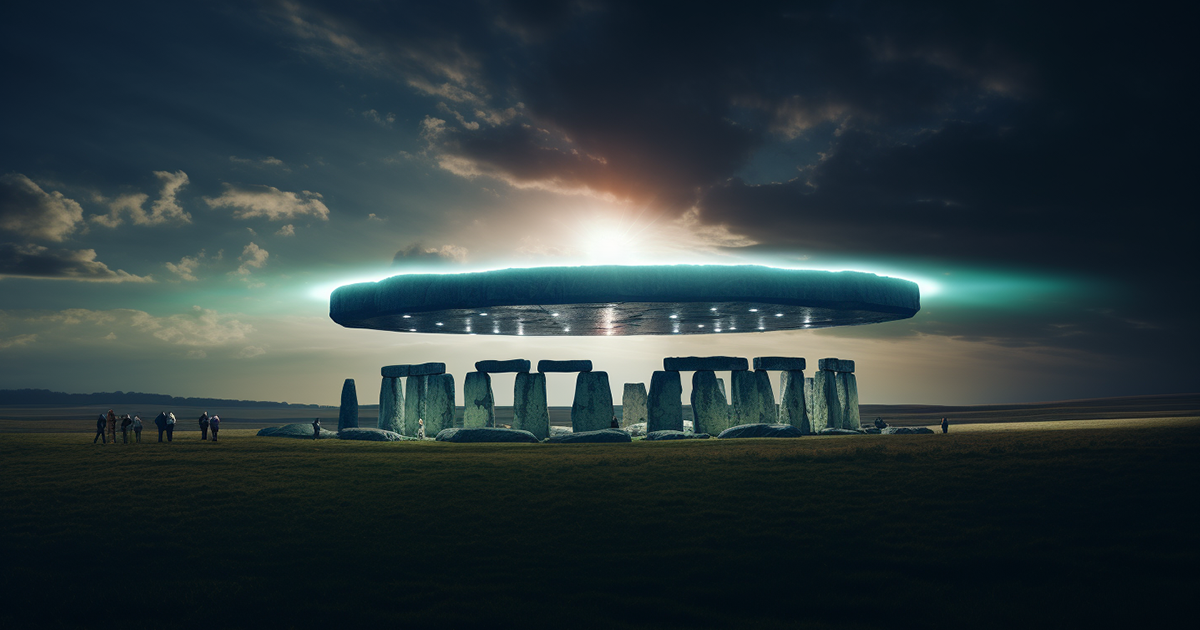The enigma that is Stonehenge, with its formidable ring of stones, continues to intrigue minds globally. Positioned on Salisbury Plain in England, this ancient wonder serves as a timeless tribute to the wisdom of our ancestors.
Over time, scholars, archaeologists, and enthusiasts have marveled at the bold construction and pondered its purpose. Instead of contemplating ideas involving beings from other worlds or elaborate schemes, can we offer a grounded interpretation of Stonehenge’s significance and origins?
Contemplating the immense challenge of erecting those colossal stones urges us to reflect on how ancient societies accomplished such a feat without modern technology.
These stones, some as heavy as adult humpback whales, were quarried many miles away and then transported to the site. There were no wheels, no large animals for assistance, making the task far from simple for the builders.
One theory suggests the use of wooden sleds or rollers crafted from tree trunks. However, the mystery deepens when considering the blue stones sourced from the remote Preseli Mountains, a staggering 140 miles away from Stonehenge.

The logistical challenge of transporting these stones across vast distances with basic tools is truly astonishing.
The intricate craftsmanship adds another layer of complexity. Carving the stones with basic bronze tools, utilizing antler picks and stone implements to carve out spaces, was vital to ensuring the stones stood upright and secure. By utilizing a tongue-and-groove system often found in carpentry, the builders fitted the upright stones with the lintels.
Let’s steer clear of speculative notions involving help from entities beyond our planet, as some have suggested. Instead, let’s explore a fresh perspective on the purpose and construction of Stonehenge that acknowledges the resourcefulness and intellect of our ancient predecessors.
In a recent study by Michael Goff, an intriguing hypothesis is introduced, shifting the focus away from extraterrestrial involvement toward a more plausible explanation grounded in human ingenuity. Goff’s theory delves into the mechanics and purpose of Stonehenge, shedding light on its possible role as an ancient timekeeping device.
By reconstructing the monument to its original form, Goff reveals that Stonehenge’s outer circle initially featured 30 sarson pillars, each paired with connecting lintel stones.
The alignment of these stones with the four cardinal points — north, south, east, and west — is a critical aspect. Sunlight strategically filters through the stones, creating an intricate interplay of light and shadow.

For generations, Stonehenge has acted as a marker for the annual solstices, underscoring its connection to the changing seasons. However, Goff’s insight goes further. He proposes that Stonehenge, with additional features like small markers, may have functioned as a daily sundial, tracking the time of day throughout the year.
This innovative concept raises questions about how ancient people calibrated their timepiece. Goff speculates that they could have used a specific constellation, the Southern Cross, which would have been prominently visible on the horizon during that era.
Each year, when the Southern Cross perfectly aligned with Stonehenge’s southern opening, they could adjust the markers to calibrate their clock.
Support for Goff’s theory gains additional credibility with the discovery of a dismantled Stone Circle, known as the Wine Mon Stones, in Wales. Researchers uncovered a stone fragment at this site that precisely matched one of the stones at Stonehenge, identified as Stone 62.
This finding suggests that these stones were originally part of a broader circle, potentially offering more evidence for the idea that Stonehenge functioned as a sophisticated timekeeping device.
Despite the compelling nature of these findings, it’s important to remember that correlation does not equal causation. While Goff’s theory aligns well with the available evidence, it’s crucial to maintain a healthy skepticism and acknowledge that the mystery of Stonehenge may always retain a degree of mystique.
Watch This Video:
As we persist in untangling the mysteries of our past, Stonehenge stands as a symbol of human curiosity and perseverance. While we may not definitively understand why or how it was built, we can appreciate the innovative spirit of our ancestors who bequeathed us this enduring monument for contemplation and awe.
In essence, Stonehenge remains a remarkable testament to the capabilities of ancient civilizations, without the need for alien intervention or extravagant theories.
